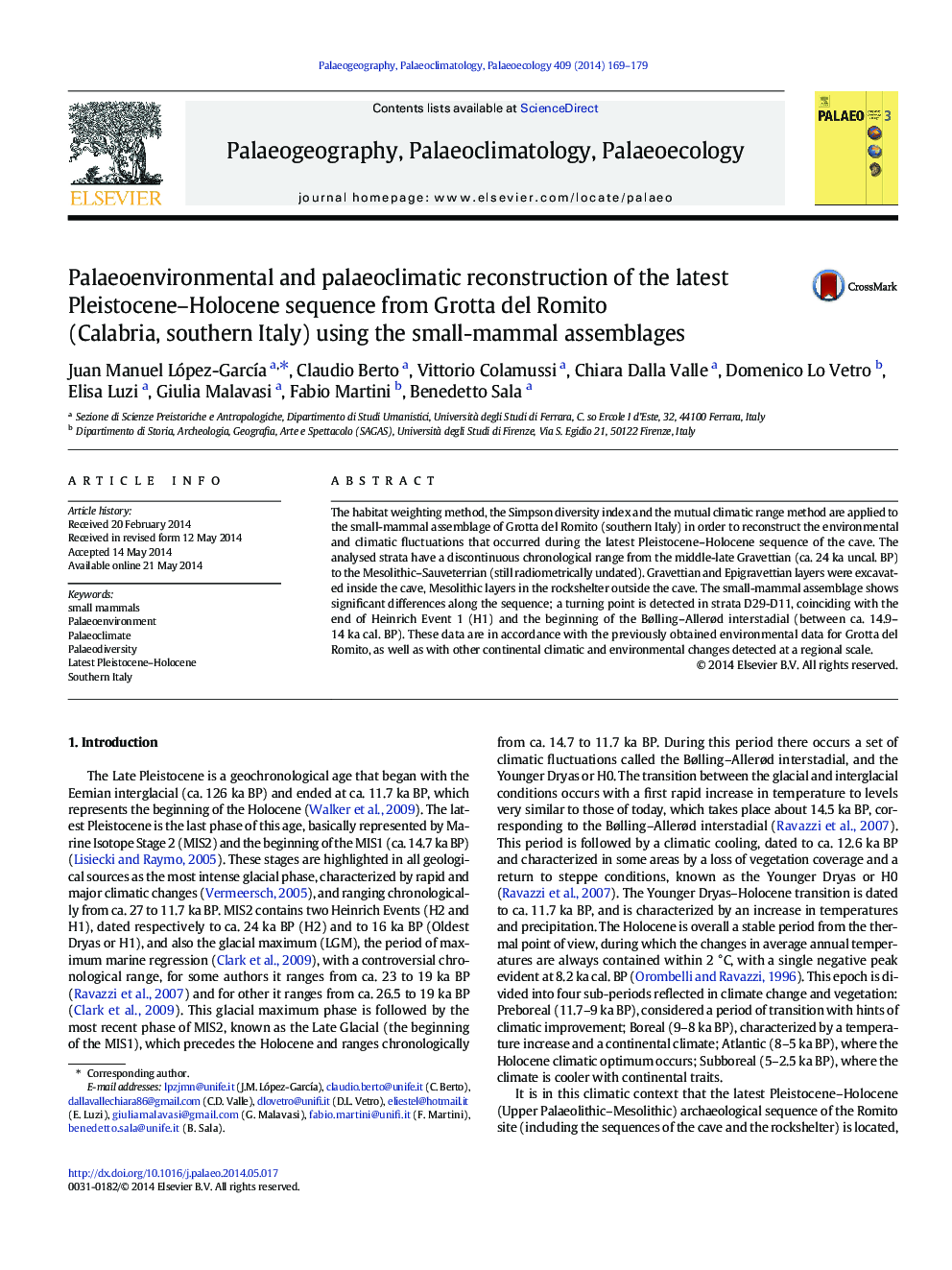| Article ID | Journal | Published Year | Pages | File Type |
|---|---|---|---|---|
| 6350093 | Palaeogeography, Palaeoclimatology, Palaeoecology | 2014 | 11 Pages |
Abstract
The habitat weighting method, the Simpson diversity index and the mutual climatic range method are applied to the small-mammal assemblage of Grotta del Romito (southern Italy) in order to reconstruct the environmental and climatic fluctuations that occurred during the latest Pleistocene-Holocene sequence of the cave. The analysed strata have a discontinuous chronological range from the middle-late Gravettian (ca. 24 ka uncal. BP) to the Mesolithic-Sauveterrian (still radiometrically undated). Gravettian and Epigravettian layers were excavated inside the cave, Mesolithic layers in the rockshelter outside the cave. The small-mammal assemblage shows significant differences along the sequence; a turning point is detected in strata D29-D11, coinciding with the end of Heinrich Event 1 (H1) and the beginning of the Bølling-Allerød interstadial (between ca. 14.9-14 ka cal. BP). These data are in accordance with the previously obtained environmental data for Grotta del Romito, as well as with other continental climatic and environmental changes detected at a regional scale.
Related Topics
Physical Sciences and Engineering
Earth and Planetary Sciences
Earth-Surface Processes
Authors
Juan Manuel López-GarcÃa, Claudio Berto, Vittorio Colamussi, Chiara Dalla Valle, Domenico Lo Vetro, Elisa Luzi, Giulia Malavasi, Fabio Martini, Benedetto Sala,
